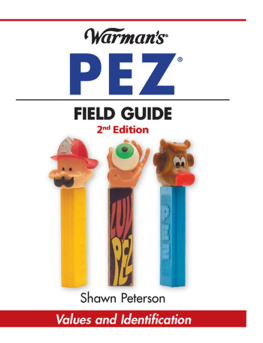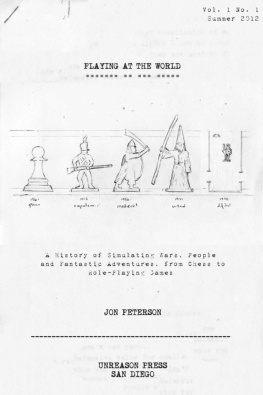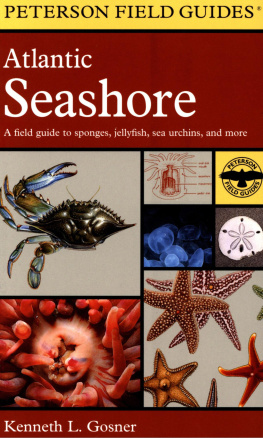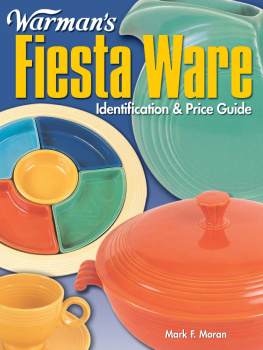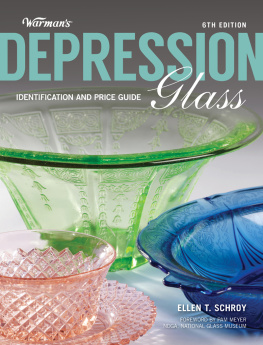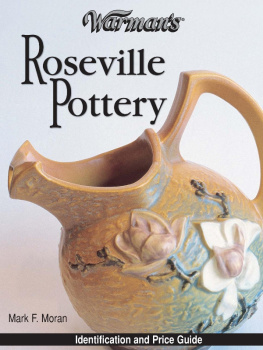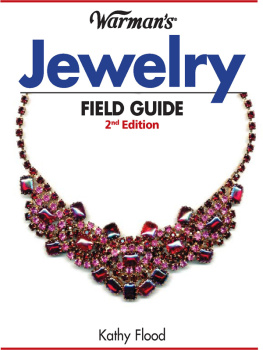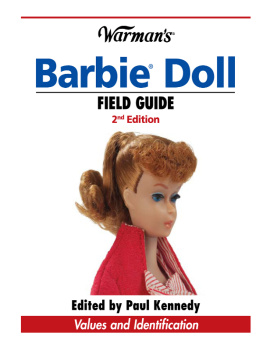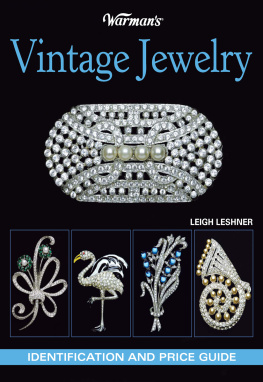Our toll-free number to place an order or obtain a free catalog is (800) 258-0929.
All rights reserved. No portion of this publication may be reproduced or transmitted in any form or by any means, electronic or mechanical, including photocopy, recording, or any information storage and retrieval system, without permission in writing from the publisher, except by a reviewer who may quote brief passages in a critical article or review to be printed in a magazine or newspaper, or electronically transmitted on radio, television, or the Internet.
PEZ is used throughout this book as a registered trademark. This book is neither endorsed nor affiliated with PEZ Candy Inc. in any manner.
Introduction
Collecting PEZ is still gaining popularity. It seems more people than ever are interested in these cute character pieces. Even with the higher costs of food, fuel, etc., attendance throughout the year at national PEZ conventions has been strong.
The items that seem to sell the best and have the most interest are the contemporary pieces.
Prices and demand for recent additions have held steady, while mid-range vintage pieces have softened to a degree.
The mid-range pieces, priced from $50 to $200, may have come down in price as much as 10 to 20 percent in some cases.
High-end dispensers and related material continue to have strong interest and selling prices reflect that fact. Current sales show, without a doubt, it's a buyers' market.

The vintage Uncle Sam dispenser shown is an example of how some prices have softened somewhat. When the first edition was published in 2004, the price was$175-$200; now it's valued at$125-$150.Uncle Sam, no feet, is part of the Bicentennial series released in 1975.
If you have been collecting the new releases for awhile and have been reluctant to move to the next price plateau, now is a great time to pick up some good deals.
A word of caution: When purchasing vintage PEZ, know what you are buying and, when possible, buy from a reputable dealer.
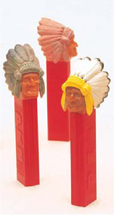
Indian Chiefs are among some dispensers being remade.
Several fake dispensers have recently been released to unknowing buyers via online auction sites. Dispensers such as Indian Chiefs, One-Eyed Monsters and Mimic the Monkey, to name a few, have been completely remade and sold as originals. Many of these sales have come from overseas sellers and the buyer has little recourse once they realize they have been taken.
If the deal seems too good to be true, it probably is. Take the time to read up and understand what the subtle characteristics of a certain dispenser should be.
When possible, attend a PEZ convention. There is no substitute for actually seeing a rare old dispenser in person, holding it, and giving it a thorough inspection before making a purchase.
It also helps to meet the dealers. Most are well known throughout the hobby and if there is a problem, they will stand behind what they are selling.
A bargain purchased online is no bargain if there is a problem with the dispenser.
PEZ the company continues to stay on top of the latest trends and licenses the hottest properties.
New dispensers are added regularly and other lines are retired almost as quickly.
Given the short retail lifespan of some of these offerings, speculation would say prices for these short runs will increase in the short term.
A set such as the unmasked Incredibles (European edition) is very difficult to find. This set was released in 2004 and now sells in the $60 to $70 range if you can find them.
The nest advice I can give anyone is to not buy as an investment. Buy only what you like, enjoy your purchase, and have FUN!

Fakes of this original One-Eyed Monster from the early 1970s began surfacing in 2007.
PEZ History
Invented in 1948, the PEZ dispenser has been around for sixty years. The candy itself has an even longer history, dating back some twenty years prior to this event. In 1927, PEZ candy was introduced in Vienna, Austria, as what could possibly be the world's first-ever breath mint. The company marked its 80th anniversary as a brand in 2008.
Edward Haas, an avid non-smoker, wanted to create an item for consumption that would be used as an alternative to smoking. His product a small compressed sugar tablet with fine peppermint oil was just the item he was looking for. The mints he created were sold in small pocket-sized tins (similar to the Altoid brand mints of today) and marketed as an alternative to smoking. His slogan was smoking prohibited pezzing allowed! But what is pezzing, or better yet, PEZ?
The name PEZ was derived from the German word for peppermint, pfefferminz. Using the first, middle, and last letter of the word, Haas came up with the name PEZ. Nearly twenty years after the candy was created, in 1948, Oscar Uxa invented and patented a little mechanical box for dispensing the candy. Resembling a cigarette lighter, the dispenser offered a hygienic way to share the candy without the risk of having someone else's fingers in your candy tin. This new PEZ box invention was quickly marketed as an upscale adult product and had moderate success throughout Europe. In 195253, Haas and company decided to expand the product to the American consumer. In the span of less than two years, it looked as though PEZ was not going to be a viable product for the U.S. market.
Haas did not give up, and the company decided to reinvent the product. They added fruit flavors to the candy and a three-dimensional cartoon head to the top of the dispenser, and marketed the product to children. What a success this turned out to be, combining two of kids' favorite things: candy and a toy! The shift proved to be a brilliant move, making PEZ one of the most recognizable commercial names around today.

It's believed the 1950s space gun was among the first dispensers marketed to children. This is a very rare example of a clear space gun.
It is believed the Full body Santa, Full body Robot, and 1950s space gun were the first dispensers marketed toward children. Due to high production and material cost (and slow sales) this group was discontinued after only a couple of short years. The witch A is thought to be the first traditional dispenser with a head and stem as we know them today. There has been much debate over the years as to who was the first licensed character to grace the top of a dispenser. However, evidence points to Popeye being the first, closely followed by Harvey Comic's Casper the Ghost and Disney's Mickey Mouse.

